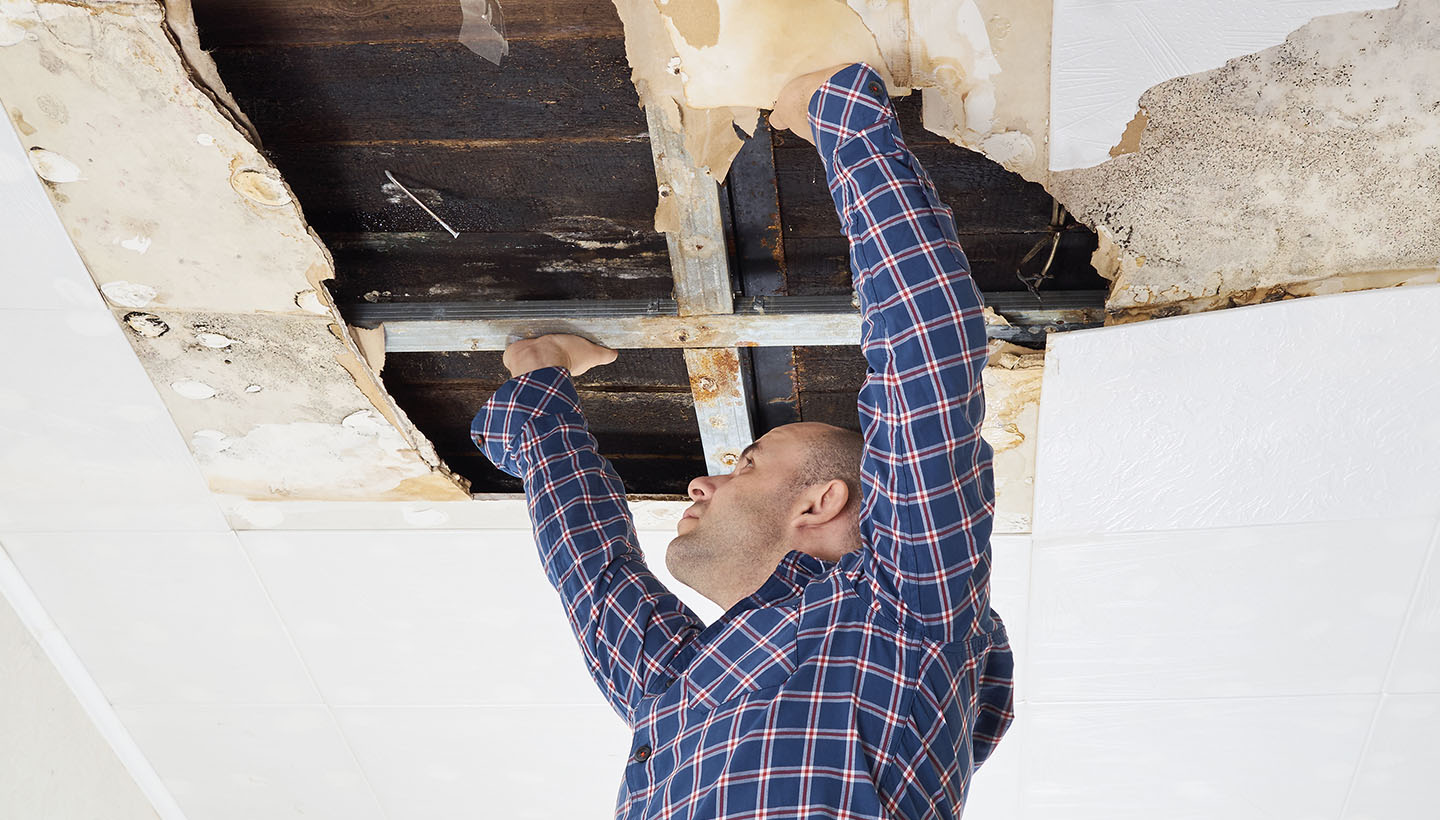
How to Become a Certified Mold Inspector
How to Get Your Mold Inspector License – Everything You Need to Know About Mold Specialization
Although not all states require you to be licensed as a mold inspector, homeowners, homebuyers, lenders, and insurance companies often want to know the person they’re working with is certified. There are six steps to becoming certified in mold inspection. Here’s a quick rundown.
- Find Out Your State’s Mold Inspection Regulations
- Complete a Mold Inspection Certification Course
- Decide If You Want to Get Certified in Mold Remediation
- Purchase PPE and Mold Inspection Equipment
- Find an Accredited Testing Lab to Evaluate Mold Testing Samples
- Establish Your Mold Inspection Business and Start Marketing Yourself
What Does a Mold Inspector Do?
Mold inspectors are specialists who are trained to look for signs of mold and moisture damage, which could create structural and health problems in a home. This is a great field to break into if you’re already a licensed home inspector and want to add to your services. Offering mold inspections as an add-on service allows you to increase your income per inspection and offer more value to your clients.
Residential mold inspections are generally priced between $300 and $700 depending on the size of the home. Commercial mold inspections are usually priced higher, starting at around $500 and up depending on the size of the area or building being inspected. According to HomeAdvisor, the national average price of a mold inspection is $644 in 2022.
Becoming a certified residential and/or commercial mold inspector involves six steps. Let’s dive in below.
6 Steps to Become a Certified Mold Inspector
#1 – Find Out Your State’s Mold Inspection Regulations
To become a certified mold inspector, you first need to understand your state’s mold inspection and remediation regulations.
Most states don’t currently require a license to be a mold inspector. But some states are considering new regulations, or already have pending legislation, that will regulate the work of mold professionals in the near future. What’s more, many homeowners, homebuyers, lenders, and insurance companies want to work with certified mold professionals who understand and follow the national standards of mold inspection and remediation.
Even if your state doesn’t require licensing for mold inspection, now is a great time to pursue a mold inspection certification in case it does in the future. This certification will also give your future clients peace of mind that you’re qualified to identify mold issues.
#2 – Complete a Mold Inspection Certification Course
Mold inspectors need to have a comprehensive knowledge of how to spot mold in a home, how to test for mold using air and surface sampling, and how to detect moisture issues that could someday lead to mold damage. Additionally, mold inspectors should be able to provide clients with solid recommendations for mold removal; sometimes that means recommending a certified mold remediation specialist to correct an existing problem, and sometimes it means offering accurate recommendations to prevent a future problem.
You’ll learn these skills and more when you take a Mold Certification Course. When looking for courses, keep in mind that your state may have specific mold inspection requirements the course needs to meet.
#3 – Decide If You Want to Get Certified in Mold Remediation
Mold inspectors visually inspect and test for mold problems inside of a home. Certified mold remediation specialists—also called mold abatement professionals—safely remove mold health hazards in a home.
Many qualified mold inspectors go the extra mile and get certified in mold remediation, as well. Doing this allows you to offer one-stop mold inspection and remediation services, which is a big benefit for your clients.
Unlike mold inspection, most states do require you to be certified in mold remediation in order to legally offer these services. Be sure to check your state’s requirements. If you decide to go this route, you’ll need to complete more intensive mold remediation training to learn how to safely remove mold and put interventions in place to prevent it in the future.
#4 – Purchase PPE and Mold Inspection Equipment
Mold growth inside of a home is a serious respiratory health hazard. That’s why, when performing a mold inspection, it’s important to wear safety gear to protect yourself in the process. Mold inspectors and remediators often wear N-95 respirators, eye protection, waterproof boots, gloves, and protective clothing when entering homes with mold damage.
Along with investing in basic PPE, you’ll also want to invest in the standard mold inspection tools. These include:
- A moisture meter to detect moisture on surfaces
- A hygro-thermometer to measure humidity
- An infrared camera to easily find vulnerable mold spots in a room
- A particle scanner to detect mold spore particles in the air
- An air sampling pump
- Surface mold tests such as tape lifts and swabs
- A borescope to help you see dark, hard-to-reach areas
- A high-powered flashlight
You can usually get all the basic tools you’ll need for around $500 or a little more. Keep in mind that your investment in PPE and tools will be paid for in just a few mold inspections.
#5 – Find an Accredited Testing Lab to Evaluate Mold Testing Samples
Mold inspectors usually have relationships with accredited testing labs where they send air and surface mold samples for analysis. While there are many choices for testing labs, it’s best to use a lab that is accredited for mold testing. The American Industrial Hygiene Association’s AIHA-LAP accreditation is the leading credential for air testing laboratories. You can find a list of AIHA-LAP-accredited labs here.
Other factors you might consider when choosing a lab include cost of sample analysis, average turnaround time, and the process for sending your samples for testing. Many mold inspectors incorporate their lab testing expenses into the cost of their mold inspections.
#6 – Establish Your Mold Inspection Business and Start Marketing Yourself
Armed with the latest tools and certifications, your final step is to start your mold inspection business! Marketing your services as a mold inspector is similar to marketing your home inspection services. Here are a few ways to establish your business and generate clients in your locale.
- Work Your Marketing – Promote your mold inspection services by creating a new mold inspection service website or our existing home inspector website. You can also promote your new service on social media and via direct mail.
- Network – Network with building contractors, construction specialists, real estate agents, and even other home inspectors (who don’t already offer mold inspection services) in your area. This helps you get your name out there and get valuable referrals.
- Work Your Contacts – Let your existing home inspection clients, industry colleagues, family, and friends know you now offer mold inspection services. This helps keep you top-of-mind when someone needs a mold inspector.
- Join a Mold Inspection Association – Joining one of the many mold professional and indoor air quality associations can help you stay up to date on industry best practices. As a member, you can also get listed (and found easily by clients) in association directories.
Additional Resources
- The Environmental Protection Agency (EPA) has a comprehensive resource center on mold topics, including best practices for mold inspection, testing, and remediation.
- Helpful mold professional industry associations include:
- Learn more about different home inspector specialties and certifications you can earn that complement your home inspection business.
How Long Does It Take to Become a Certified Mold Inspector?
The time it takes to earn a certification in mold inspection varies depending on the type of certification you choose and your state’s requirements (if any). Generally, the process doesn’t take long and can be completed within a few weeks or months depending on your timeline and goals.
AHIT’s Certified Mold Assessor Technician Course involves 16 hours of online coursework. Other courses may be longer or shorter. If you plan to become certified in mold remediation as well as mold inspection, your coursework may take a little longer.
Even if it isn’t required by your state, adding a mold inspection certification to your skillset is a worthwhile move to increase your bottom line.




